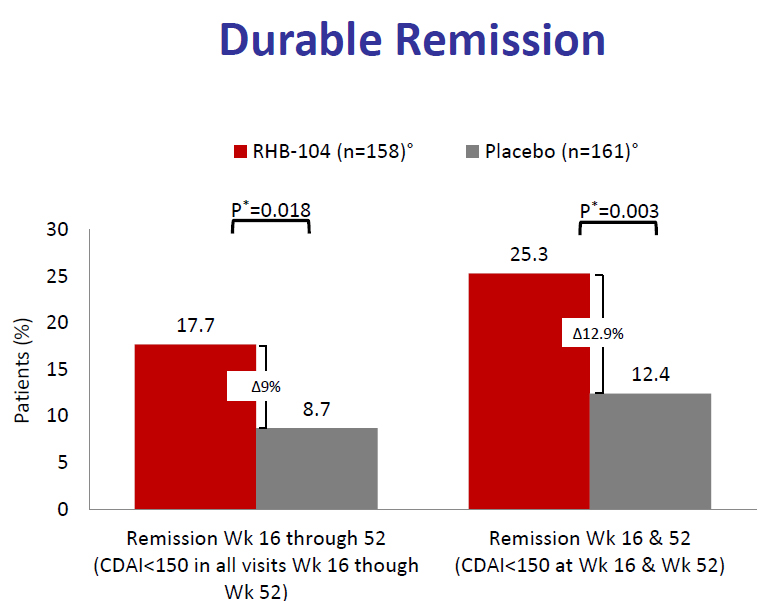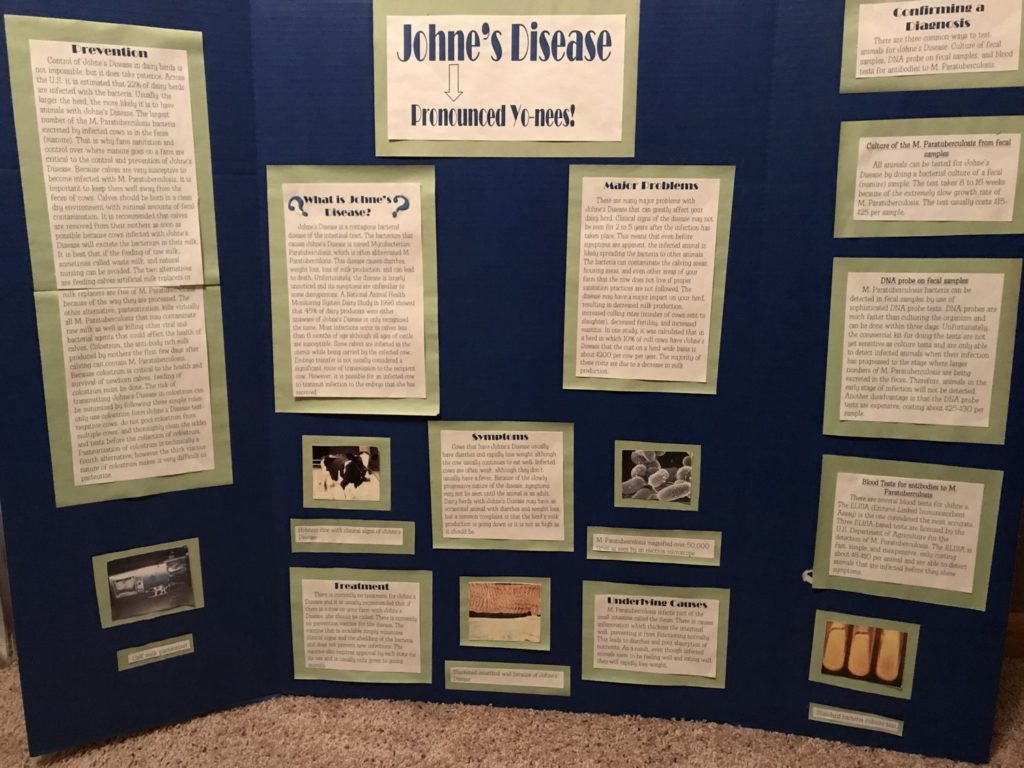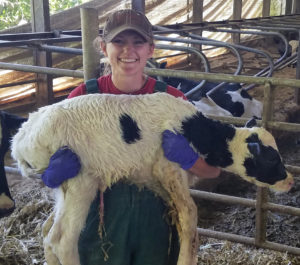OPTIMAL DAIRY HERD SURVEILLANCE METHODS
2019-01-30 18:11:40Research Article
 Scientists at the University College Dublin, in partnership with noted Australian epidemiologist, Evan Sargeant, and Animal Health Ireland, evaluated multiple diagnostic testing strategies for Irish dairy herds. The aim of their study was to evaluate the suitability of a range of national surveillance methods, both for case detection and for providing confidence of herd freedom from MAP infection, in terms of herd sensitivity, positive and negative predictive values, overall cost, and utility, including any logistical factors associated with their use.
Scientists at the University College Dublin, in partnership with noted Australian epidemiologist, Evan Sargeant, and Animal Health Ireland, evaluated multiple diagnostic testing strategies for Irish dairy herds. The aim of their study was to evaluate the suitability of a range of national surveillance methods, both for case detection and for providing confidence of herd freedom from MAP infection, in terms of herd sensitivity, positive and negative predictive values, overall cost, and utility, including any logistical factors associated with their use.
Strategies the scientific team evaluated included:
- ELISA on individual milk samples from all lactating cows in a herd annually.
- ELISA on serum samples from all adult cows in a herd annually.
- ELISA on serum samples collected at slaughter from culled cows (serum already being collected for the Irish brucellosis program); with estimates made for testing 50%, 75% or 100% of culled cows.
- ELISA on bulk tank milk.
- PCR on 6 environmental fecal samples.
- PCR on pooled fecal samples (5/pool) for all adult cows.
In general, testing for the MAP organism by PCR on pooled fecal samples from all adult cows performed best, when cost was not a consideration. MAP detection at the herd-level using environmental fecal sample collection provided the best combination of herd testing accuracy and affordability.
This is consistent with findings in the U.S. where environmental fecal samples are a component of the Voluntary Bovine Johne’s Disease Control Program. Environmental fecal testing was also the basis of the last (2007) survey of U.S. dairy herds as reported by Lombard et al. (Preventive Veterinary Medicine 108:234-238, 2013.)
Readers are strongly encouraged to read the full Open Access report in the Journal of Dairy Science (volume 102, pages 1-14) to appreciate the many nuances of the findings of this excellent study.
MAP FOUND IN IRANIAN CROHN'S PATIENTS
2019-01-12 19:41:39 Researchers in Iran published a novel study comparing the rates of MAP detection by IS900 PCR, the nature of the intestinal pathology, and the ability to detect MAP by acid-fast staining among 30 humans with Crohn's disease (CD), 30 humans with non-inflammatory bowel disease (nIBD), 30 goats with clinical signs compatible with Johne's disease (JD) and 30 healthy goat kids. For the human subjects, they reported that 47% of CD patients and 13% of nIBD controls were IS900 PCR-positive for MAP. By contrast, 70% of JD goats and 0% of healthy goats were IS900 PCR-positive. Acid-fast bacteria (AFB) were seen in tissues of 7% of CD cases. In these cases the number of AFB was characterized as paucibacillary, meaning very few red-staining bacteria were seen. Excellent photomicrographs are provided in the publication. By contrast AFB were seen in 0% nIBD controls, 90% of goat JD cases and 0% of healthy goat controls.
Researchers in Iran published a novel study comparing the rates of MAP detection by IS900 PCR, the nature of the intestinal pathology, and the ability to detect MAP by acid-fast staining among 30 humans with Crohn's disease (CD), 30 humans with non-inflammatory bowel disease (nIBD), 30 goats with clinical signs compatible with Johne's disease (JD) and 30 healthy goat kids. For the human subjects, they reported that 47% of CD patients and 13% of nIBD controls were IS900 PCR-positive for MAP. By contrast, 70% of JD goats and 0% of healthy goats were IS900 PCR-positive. Acid-fast bacteria (AFB) were seen in tissues of 7% of CD cases. In these cases the number of AFB was characterized as paucibacillary, meaning very few red-staining bacteria were seen. Excellent photomicrographs are provided in the publication. By contrast AFB were seen in 0% nIBD controls, 90% of goat JD cases and 0% of healthy goat controls.
Special to this publication is a table contrasting the types of pathology seen in CD and JD. Pathology common to both the CD patients and JD goats, respectively was: lymphangiectasia/edema (67% vs 96%), vasculitis/lymphangitis (20% vs 73%), diffuse granulomatous enteritis (20% vs 33%), focal or multifocal granulomatous enteritis (63% vs 14%), neuritis or neuronal hyperplasia (36% vs 43%) and cryptitis (40% vs 14%). Pathology unique to JD goats (seen in 0% of CD patients) was: Diffuse multibacillary (abundant AFB) granulomatous enteritis (see in 43% of goats). Pathology unique to CD patients (seen in 0% of goats) was: Ulceration (73%), fibrosis (30%), pyloric gland metaplasia (40%), thrombosis (30%), paneth cell metaplasia/hyperplasia (17%) and goblet cell hyperplasia (14%).
Comment: Readers interested in comparative pathology of CD and JD will appreciate the discussion section of this publication. When considering pathology comparisons between CD and JD, readers should remember: 1) that CD patients generally have undergone prolonged therapy with a wide array of immunosuppressive drugs which may affect the nature of the pathology, while animals are not so treated, and 2) that zoonotic infections seldom cause identical pathology in the animal and human hosts. The duration on therapy for CD patients in this study was not reported but the mean age was 34 years so one could surmise that the patients had their disease for some time before the pathological assessment.
The full Open Access article is available: F. Zarei-Kordshouli, B Geramizadeh, and A. Khodakaram-Tafti. 2019. Prevalence of Mycobacterium avium subspecies paratuberculosis IS 900 DNA in biopsy tissues from patients with Crohn’s disease: histopathological and molecular comparison with Johne’s disease in Fars province of Iran. BMC Infectious DIseases 19:23. doi.org/10.1186/s12879-018-3619-2
JOHNE'S MAKES DAIRY FARMS FINANCIALLY VULNERABLE
2018-12-27 16:19:19Research article - Dairy farm economics
 Scottish experts on farm economics explored the financial impact of Johne’s disease on Scottish dairy farms using farm-level economic models. Their methods took into account all the biophysical and financial characteristics between activities on the whole farming system to assess financial losses due to external shocks. The study focused on financial vulnerability as reflected in dependence on market prices and support systems, and the within-herd prevalence of Johne's disease.
Scottish experts on farm economics explored the financial impact of Johne’s disease on Scottish dairy farms using farm-level economic models. Their methods took into account all the biophysical and financial characteristics between activities on the whole farming system to assess financial losses due to external shocks. The study focused on financial vulnerability as reflected in dependence on market prices and support systems, and the within-herd prevalence of Johne's disease.
The authors concluded: A majority of dairy farms are resilient enough to cover losses due to disease in addition to their other (non-Johne’s related) costs or losses. However, around 14% of farms rely on farm support payment to cover their losses. These farms have lower per cow milk production levels, which are inadequate to cover economic losses from Johne’s disease without payment supports. These farms are most vulnerable to changes in farm support payments and require attention when agricultural policies are reformed in the future or when designing and implementing a national control and eradication programme.
CROHN'S CURED
2018-12-17 14:44:55 Pictured here is Dr.med. vet. Heinrich Dahmen. The photo was taken at the 14th International Colloquium on Paratuberculosis held in Mexico, June 2018. He is the picture of good health.
Pictured here is Dr.med. vet. Heinrich Dahmen. The photo was taken at the 14th International Colloquium on Paratuberculosis held in Mexico, June 2018. He is the picture of good health.
However, in November 2000, he was not feeling at all well and in April 2001 a diagnosis of Crohn's disease was made based on colonoscopy. Today he is healthy and actively engaged in practicing veterinary medicine.
Heinrich agreed to report his success story here to provide hopes for others with Crohn's disease and to inspire further work on the role MAP plays in the pathogenesis of this common problem.
REDHILL TRIAL: MORE POSITIVE NEWS.
2018-12-07 15:06:32 Dr. David Graham, Baylor College of Medicine, presented results of the Phase III randomized, double blinded, placebo controlled, multicenter, parallel group study to assess the efficacy of anti-MAP therapy (RHB-104) in the treatment of Crohn's disease at the United European Gastroenterology (UEG) Week that took place in Vienna, October 20 - 24, 2018.
Dr. David Graham, Baylor College of Medicine, presented results of the Phase III randomized, double blinded, placebo controlled, multicenter, parallel group study to assess the efficacy of anti-MAP therapy (RHB-104) in the treatment of Crohn's disease at the United European Gastroenterology (UEG) Week that took place in Vienna, October 20 - 24, 2018.
A previous press release announced significant remission levels for RHB-104-treated patients compared to controls at the 26 week time point. RedHill now announces that the remission was durable, i.e. significantly better than placebo controls at 52 weeks. This is one of the data slides shown.

This link provides the October 22 RedHill press release.
This link provides the 22 slides shown by Dr. Graham at the UEG meeting (with permission). These slides provide details on the study design, data analysis methods, and results at primary and secondary endpoints as well as results on study subgroups, e.g. comparison on patients treated with anti-TNF drugs or corticosteroids versus controls.
johnes.org is grateful to Dr. Graham and RedHill BioPharma for granting permission to provide this information to its readers.
WHY I DO THIS.
2018-12-06 11:59:01Once upon a time, about 15 years ago, there was a young Wisconsin girl named Lizi who was in 4H , a U.S. organization that provides experiences where young people learn by doing. Lizi decided to do a project to learn more about Johne's disease, something she had seen on her family's farm. She searched the web and found johnes.org. Lizi used the information and images she found there to create a poster which she exhibited at the Lodi Agricultural Fair and Dane County Fair in Wisconsin, winning a blue ribbon for her efforts. Here is a picture of Lizi's poster.

 This story came to light when Lizi was in my Veterinary Bacteriology & Mycology class, Fall semester in 2017, learning (again) about Johne's disease. Lizi shared this picture of her poster and granted me permission to tell her story here. The adjacent photo shows Lizi with a newborn calf on her family's farm. She will graduate with her DVM degree May, 2020.
This story came to light when Lizi was in my Veterinary Bacteriology & Mycology class, Fall semester in 2017, learning (again) about Johne's disease. Lizi shared this picture of her poster and granted me permission to tell her story here. The adjacent photo shows Lizi with a newborn calf on her family's farm. She will graduate with her DVM degree May, 2020.
You never know what kind of impact knowledge sharing will have.
This is why I do this.
Michael.T. Collins, DVM, PhD, DACVM.
JOHNES.ORG VERSION 4.0
2018-12-01 08:00:37 We are pleased to announce this new version (4.0) of johnes.org. The content has been updated and expanded, and the site has been enhanced with more images. The image gallery has been particularly popular with past users, so we expanded this feature and encourage readers to use these images in the furtherance of our Johne's education effort. We also invite your feedback, especially if you find errors that require correcting.
We are pleased to announce this new version (4.0) of johnes.org. The content has been updated and expanded, and the site has been enhanced with more images. The image gallery has been particularly popular with past users, so we expanded this feature and encourage readers to use these images in the furtherance of our Johne's education effort. We also invite your feedback, especially if you find errors that require correcting.
This large effort would not have been possible without the financial support of many sponsors and donors (see sponsor link at the very top in red), especially our platinum sponsor, Zoetis. Please show your appreciation for their help to advance Johne's disease education by clicking on their logo and visiting their website. If you would also like to help sustain johnes.org we would appreciate donations of any amount: just click the Donate button.
You will be receiving news notices from us about noteworthy research or other publications of relevance to animal owners and veterinarians. We invite you to share with us news items publications or other things you find newsworthy for consideration. If you wish to unsubscribe from our email list, please click "unsubscribe" in the footer and we will respect your wishes.
OVINE PARATUBERCULOSIS IN URUGUAY
2018-11-12 16:39:12Case Report:

Eleven cases of Johne’s disease are described in this case report. All originate from a 735 head flock of sheep in Colonia, Uruguay. Six animals had the multibacillary form of the disease (abundant acid-fast bacteria), and 5 had the paucibacillary form with minimal lesions. All animals were infected with the S-strain of MAP. This is only the second time the S-strain of MAP has been reported in South America, the other being from a sheep in Argentina.
Comment: This report has a lovely scanning electron micrograph of MAP inside macrophages, an excellent picture of the thickened intestine, and good histopathology images, both H&E stained and ZN-stained. The article notes that Johne’s disease is widespread in Uruguayan cattle but has not been documented as a problem in sheep until this case report. This report is newsworthy for documenting S-strain MAP infections in sheep in Uruguay and for the relatively young journal in which the report appears.
This is an open-access article distributed under the Creative Commons Attribution License, which permits unrestricted use, distribution, and reproduction in any medium, provided the original work is properly cited.
Journal of Infection in Developing Countries, 12(3):190-195, 2018.
COMPARISON OF TWO PCRS FOR DIAGNOSIS OF PARATUBERCULOSIS IN SHEEP
2018-11-12 16:36:47Research Article

Julie Arsenault and colleagues just reported a comparison of PCR assays to detect MAP in fecal samples from ewes culled from 7 flocks in Quebec, Canada (see JVDI OnlineFirst, 02-NOV-2018, link below). This is a novel contribution to Johne’s disease research since there are not many reports of diagnostic test accuracy on sheep are available from animals in North America.
The case definition for being MAP-infected was based on isolation of MAP in culture from tissues and was met by 44 ewes in the study. Another 30 culled ewes from these same flocks were deemed not MAP-infected based on culture for MAP from tissues and histopathology. The in-house real-time IS900 PCR sensitivity (Se) & specificity (Sp) were 84% and 93%. By comparison, a commercial PCR kit (Tetracore) had values of 52% (Se) and 93% (Sp), assuming “suspect” classified samples were considered negative. The Tetracore Se & Sp values were 63% and 87% if suspects were classified as positive because Se goes up, but Sp goes down as you move the cut-off for defining a “positive”.
Other interesting observations: A commercial, ELISA had and Se/Sp of 14% and 100% on these same ewes further verifying that ELISA is not particularly useful when used on sheep. And among the ELISA-positive ewes 3 had multibacillary lesions (lots of MAP observed) and 1 had paucibacillary lesions (few or no MAP observed). Fecal culture Se was 21% (3 multibacillary and 2 paucibacillary).
Comment: Evaluation of diagnostic assays is tricky business. The case definition is crucial! This study used a standard, well-accepted case definition for MAP-infected sheep, i.e. the sheep considered as “cases” were culture-positive from mesenteric lymph nodes, ileum or feces. The trickier part is the case definition for not MAP-infected. While it is relevant to test animals residing in the same flocks as the MAP-infected animals, it is also important to test animals in flocks that are 100% certain to be MAP-free. This higher standard for not MAP-infected, testing MAP-free flocks, was not achieved in the study making specificity estimates questionable (acknowledged by the authors). Because PCR assays may be more sensitive than the “gold standard” used to define not infected ewes there may be instances where the PCR was correct and the case definition for being not MAP-infected was wrong. And, the study was relatively small making the 95% confidence limits on Se and Sp estimates fairly large.
There is much to be learned from the study details, including the supplementary information. Check out Fig.1 to see from where MAP was most often isolated. Read this well-written article, in the Journal of Veterinary Diagnostic Investigation it is worth your time.
MAP AND TYPE I DIABETES MELLITUS (T1DM)
2018-10-31 10:06:43 In 2006 Dr. Tom Dow hypothesized that MAP in cow’s milk could act as a trigger for Type 1 Diabetes Mellitus (T1DM) – see the journal Medical Hypotheses 67:782-785, 2006. He now draws together the body of scientific work published since that time, much of it from the laboratory of Dr. Leonardo Sechi, that backs up this highly probable causal association in a short You Tube video related to milk. Watch both and judge for yourself.
In 2006 Dr. Tom Dow hypothesized that MAP in cow’s milk could act as a trigger for Type 1 Diabetes Mellitus (T1DM) – see the journal Medical Hypotheses 67:782-785, 2006. He now draws together the body of scientific work published since that time, much of it from the laboratory of Dr. Leonardo Sechi, that backs up this highly probable causal association in a short You Tube video related to milk. Watch both and judge for yourself.
« Previous 1 … 15 16 17 18 Next »